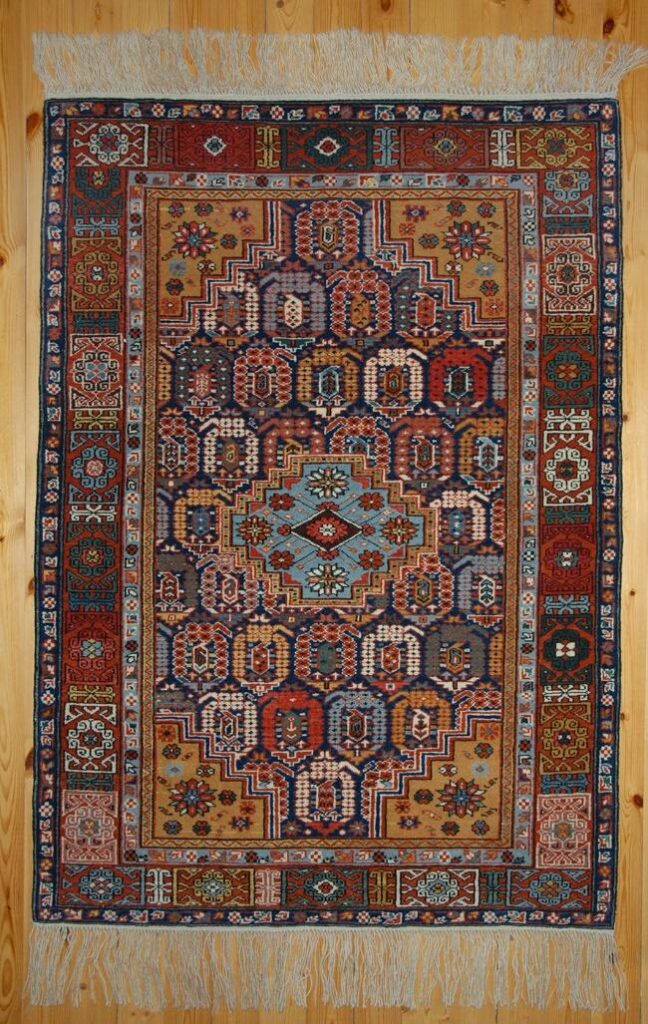Baku Rugs

BAKU (Badkuba, Baki) is the capital city of the Republic of Azerbaijan [the former Azerbaijan SSR] and one of the chief ports on the Caspian Sea. The colloquial Persian form Bādkūba, which popular etymology suggests to be the original name derived from the natural conditions of the site (“wind-beaten”).
In the first decades of the 19th century Persia lost its Caucasian territory to Russians throughout two prolonged wars. After the conclusion of the second Russo-Persian War in 1828, Baku and eastern Transcaucasia enjoyed nearly a century of peace. The local economy revived, and Baku emerged as the most important Caucasian trading port on the Caspian.
Baku underwent a rapid and far-reaching transformation under Soviet rule. Its population grew from 439,100 in 1926 to 1,022,000 in 1979, and the central parts of the city were modernized to look like a Western municipality. Today it is the capital of the Azerbaijan Republic with a big oil industry.
Rugs branded as Baku are mostly antique pieces woven during the 19th and early 20th in small towns and villages around the city such as Chila (Khila), Surahani (Surakhani). Designs of such pieces are named after these surrounding weaving centers.
Technical aspects and the structure of Baku Rugs

Antique Baku rugs have an average knot density of 100 knots per square inch. Knots are symmetrical (Turkic). Warps and Piles are woolen. Wefts may be either cotton or wool. Yarns are Z spun. Wefts are mostly white.

The earliest examples are larger than most Caucasian rugs. Carpet sizes are common as well as area rugs. Some Baku pieces are woven in small square-shaped formats. Baku runners are mostly branded as Saliani which a village around.
Dyeing and Painting of Baku Rugs
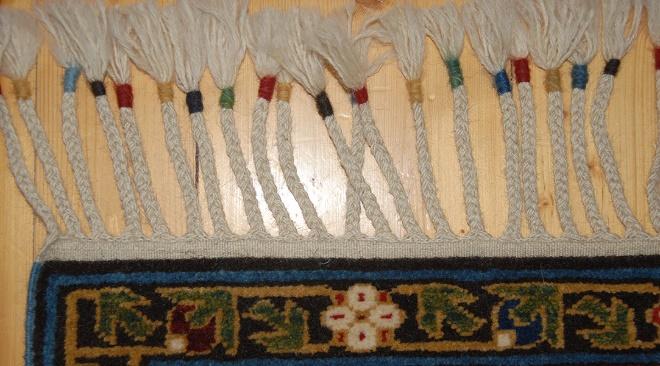
Patterns are done with ivory or other white tones on darker ground such as midnight blue or madder red. The opposite coloring is also possible in which the field is ivory filled with afshan patterns in dark tones.
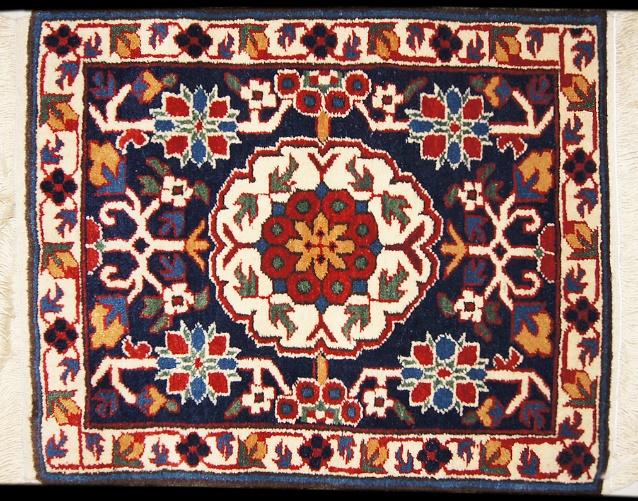
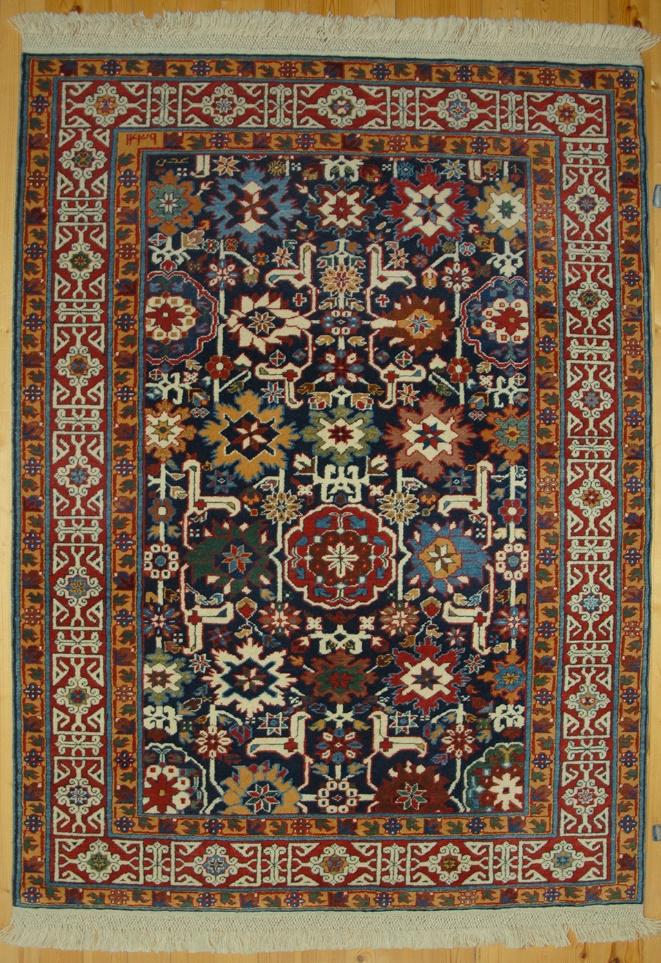
Earth tones are frequent on Baku palette. Blue shades tend to turquoise. Turquoise and madder rosy, ivory and a deep yellow are dominant on Baku palette.

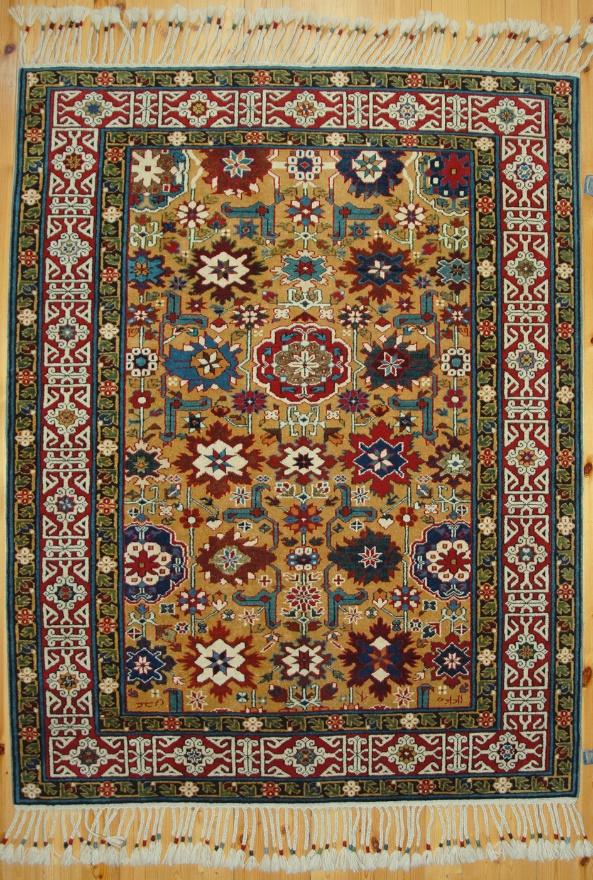
Designs and patterns of the Baku Rugs

Boteh (buta) is a common motif in Baku rugs serving as large or medium repeats which fill the field. A type of Baku buta design, attributed to Khila, consists of an all-over boteh field with stepped spandrels and a stepped central medallion. There are also pieces with such fields but without a medallion. Some runners designed with large repeats of Buta.
Afshan or Avshan (Persian for scattering) is a favored design in Baku. It is an all-over design consisting of stylized calyxes on a
stem surrounded by florets. Stepped medallion are also common appearing in double-medallion or pole medallion structures.
